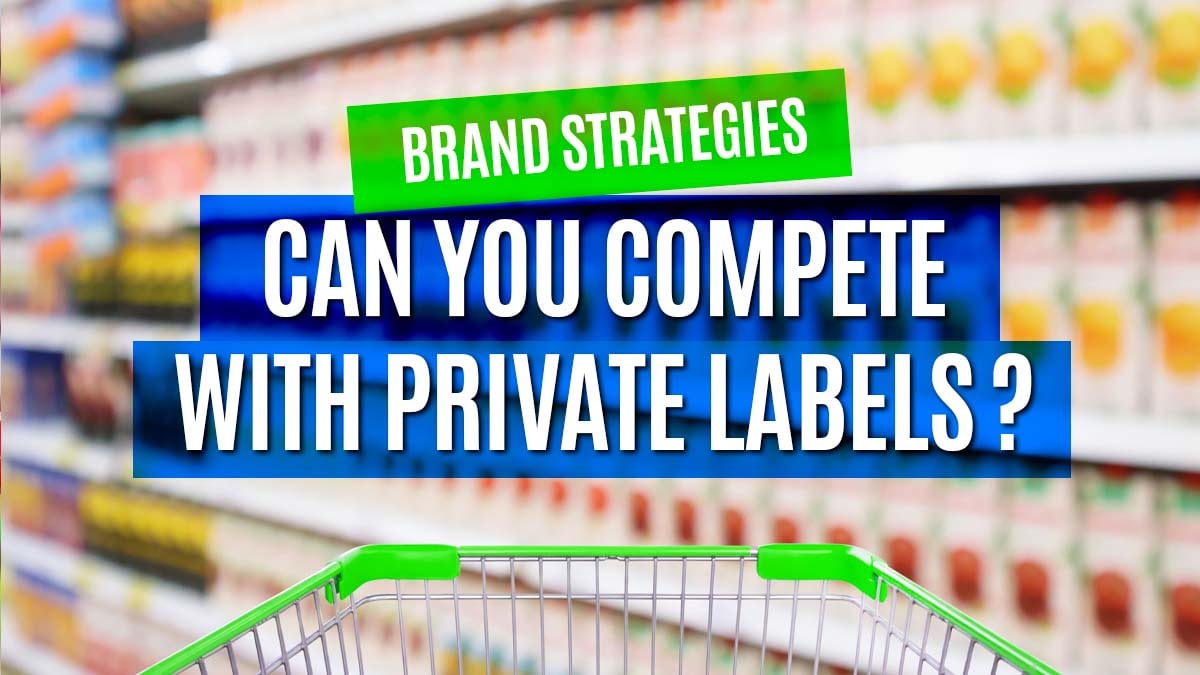
Let’s begin with defining a private label. Typically, it is a retailer’s house brand. Craftsman is a well know Sears brand. Sears is not a manufacturer, so the Craftsman products were other brands cosmetically enhanced to have the brand color and badge of Craftsman. GE appliances and Milwaukee Power Tools are two of the major brands that provided Sears “private labeled” products.
This concept of private label and generic products originated in the 1970’s. I recall seeing white boxes on grocery store shelves. They were alternatives to the higher priced brands like Kellogg’s Corn Flakes. The “no frills” strategy was created during a bad economy. It provided shoppers a lower priced alternative. Its origins lie in cheap, low quality products, focusing on commodity categories and segments. As time passed, private labeling expanded into most categories in the supermarket in some countries.
The packaging originally was a generic white box with black printing... just the facts, no pictures. The plain design was a bold statement identifying it as best value...but not promising it was as good as the major brands. The retailers had foot traffic and placed the products in optimum positions on the shelf. With a weekly circular, there was little expense to advertise. House brands soared in popularity with the retailers because they delivered the highest profit margin.
At the beginning of this “no-frills” movement, private label products were easy to spot and put in premium positions in the store. There was only one marketing message to the consumer...these products are the lowest price.
The “private label” concept evolved over the years and has again gained popularity for sellers and retailers of all types. Walgreen's has their line of house products which are other brands products branded and packaged for Walgreen’s. You can find private labels in every category of product and most retailers... Lowe’s, Home Depot, Wegmans, Amazon. But, brands like DeWALT and Under Armor use the same system to add to their product line.
Tesco, in the UK, has revamped much of its low cost private label and relaunched it as a range of 400 products, under 16 different names They are all marketed under the ‘Exclusively at Tesco’ banner. Similarly in the US, Target® has announced the launch of – Smartly – a variety of 70 personal care products.
Private Label Helps Big Brands Expand Product Offerings Quickly and Economically.
Today, private label doesn’t guarantee cheaper and isn’t limited to discounters. All types of CPG brands can more affordable expand their product lines through this method. Like Sears, a company’s brand strategy affects the choice of product and source. In the end the product has immediate reputation of the brand. Both the brand and the manufacturer benefits. The brand saves on development costs and the manufacturer increases their sales.
Private Label Helps Retailers Compete On Price And Increase Profits.
There are two directions retailers are taking with private labeling, value branded and exclusive house brand. The value approach evolved from the generic with upgraded the graphics. You see this in retailers where their retailer brand package mimics the big brand and places it side-by-side on the shelf. The package often includes “same as “ statement.
Retailers are also creating brands to compete with their suppliers marketing to cultivate consumer loyalty with a luxury or high value persona. It’s no longer limited to generic branding of cheap product. House brands are being developed and marketed as exclusive quality products you travel for. In many cases the consumer isn’t aware that it’s a house brand because the naming and graphics are created for the product and designed to appeal to a specific consumer demographic.
House brands help traditional stores to compete with ecommerce stores with the ability to quickly and economically enter into different categories and sectors. Amazon is known to bring on products under their brand where the category has shown great growth opportunity and popularity with their shoppers. The pet category grew and Amazon saw opportunity and successfully navigated into private labeled products...competing head-to-head with their sellers.
Maybe it’s unfair, but it’s here to stay.
As a brand, you have to consider house brands as real competitors. They aren’t going away. Smart retailers, like Amazon, will jump in where they see opportunity. You can use the same tactics they are using to expand your product offering by private branding products you can buy from other manufacturers.
When evaluating the competition, you have to consider retail private labels not just major players. Positioning your product to drive its reputation and demand is the way to succeed in the marketplace. Be honest about product and marketing weakness. Know your primary audience and focus messaging and graphics to them.
It’s never been more important to be honest about the reality of your brand position to the competition. Shopping is evolving and you need to have a firm goal for positioning and be true to it in every action. What would it mean to your brand if it sells in a discount store? Damage it or have no impact? The retailers you are in effect your product valuation in the eyes of the consumer. People have told me they won’t buy a DEWALT drill in Lowe’s because it’s a “DIY” store not exclusively for professional contractors, therefore, the product in Lowe’s must be inferior to the brand at Granger.
You Can Succeed Against Private Labels
Brand growth is achievable with realistic, planned actions and quality package design. It requires understanding the retailers and competitor objectives and strategies along with your consumers’ needs. Catalpha has always considered private labels and local brands as our clients’ competitors when we conduct our evaluation of the competition. Every product available won’t be on the shelf, but they are online somewhere. We won’t begin creating until we review the environment your product will sell in (brick-n-mortar and online). Some agencies don’t do research and only rely on what they are told. They do a disservice to the brand and company that requested the professional help.
Most major brands we work with bring us their research, insider intelligence, much more in-depth than our resources provide. With their daily activities in the industry, they provide in-the-field experience with consumers as well...because they know it gives them the edge. The insight allows for a higher level of collaboration, conversation between client and Catalpha’s creative. Over 45 years as a Creative Professional, I have seen every major brand invest in the high level of intelligence and purchase the research they need. ”Investing” is key to their ability to respond to the market, be it marketing messages and product development.
Successful Branding and Package Design is The Result of High Level Collaboration between Client and Creative Professionals
If you want to grow and remain a contender in your industry- you need to invest in your brand. Call me to learn how we can be your partner for success.
1-888-337-0066
Or fill out the form below so we can schedule our first phone meeting.
Additional articles that may interest you:
6 Compelling Package Branding Design Case Studies
10 Ways To Make Your Product Stand Out On The Shelf [and Sell More]!
Calculating The Cost Of Product Packaging
7 Ways To Create Luxury Packaging

